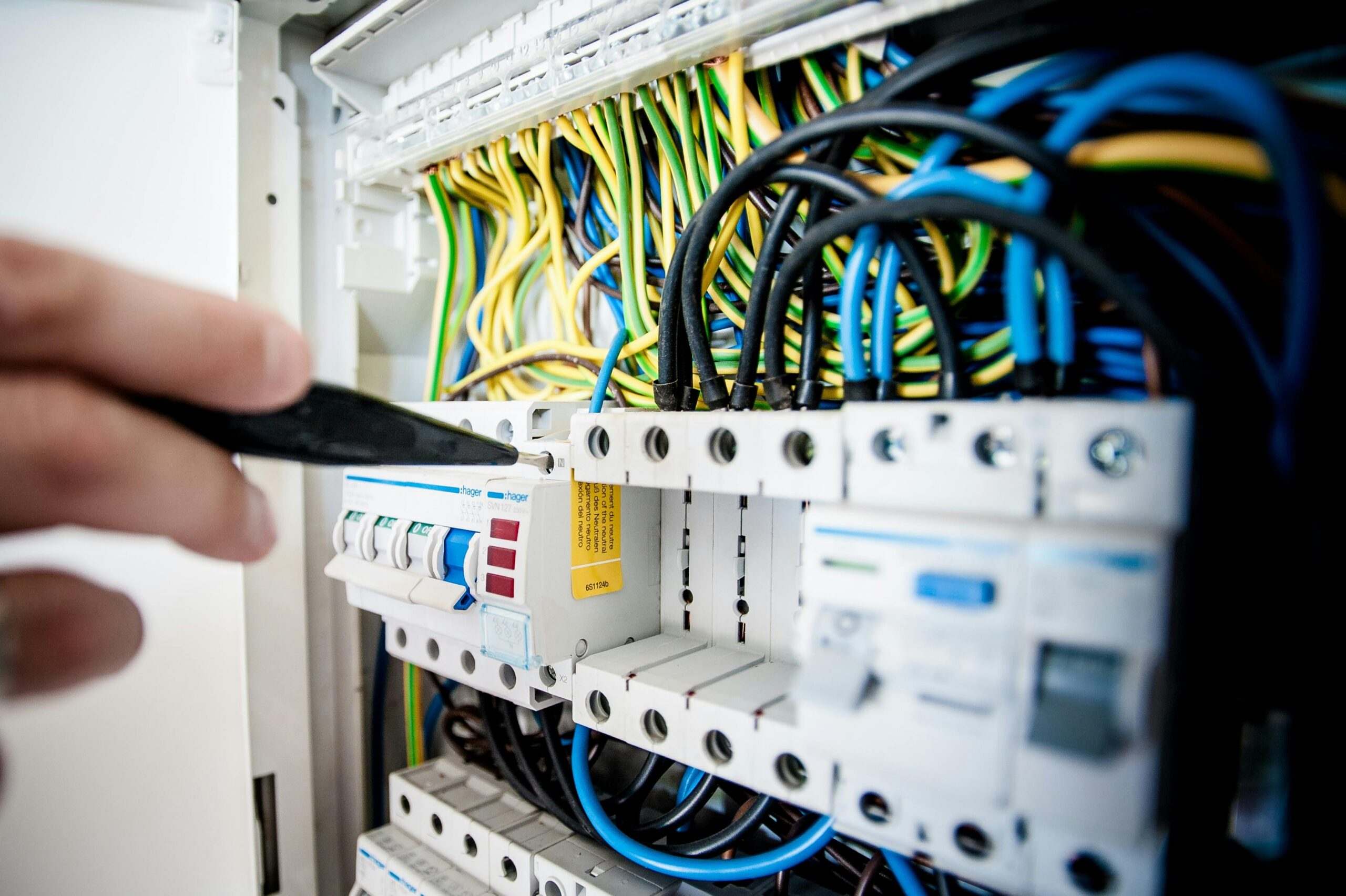Modern Living Needs Modern Wiring
Homes built before the 1980s weren’t designed to handle today’s electrical demands. Between smart appliances, home offices, and energy-efficient systems, the average household consumes far more power than it did just a few decades ago. Upgrading your home’s wiring ensures that your electrical system can safely support your lifestyle without overloaded circuits or fire risks. It’s one of the most essential improvements for preserving both safety and comfort.
Replace Outdated Electrical Panels
One of the first things professionals check in older homes is the electrical panel. Outdated panels may not be able to support newer appliances or HVAC systems, and they can pose serious safety hazards if they haven’t been maintained. A new panel with higher amperage allows your home to distribute power more efficiently and safely. This is especially important if you’re planning other upgrades like bathroom plumbing upgrades or installing energy-intensive equipment.
Add More Outlets Where You Need Them
If you’re relying on power strips and extension cords to plug in everyday devices, your home likely needs more outlets. Older homes often have only one or two outlets per room, which doesn’t cut it for today’s electronics and smart devices. Adding outlets in high-use areas like the kitchen, living room, and home office can help reduce clutter and make the space more functional. It also prepares your home for future additions like water-saving fixtures that may require nearby power sources.
Upgrade Lighting for Safety and Efficiency
Swapping out old lighting for newer, energy-efficient fixtures can make a big difference in both safety and appearance. New LED lighting lasts longer, uses less electricity, and emits less heat than outdated bulbs or fixtures. Modern lighting options also support dimmers, motion sensors, and smart controls, making them a great fit for eco-friendly home ideas. It’s an easy upgrade that quickly improves how your space looks and functions.
Install GFCI and AFCI Protection
Ground Fault Circuit Interrupters (GFCIs) and Arc Fault Circuit Interrupters (AFCIs) are now required in most building codes for good reason—they prevent electrical shocks and reduce fire risk. GFCIs are essential in moisture-prone areas like kitchens and bathrooms, while AFCIs protect against dangerous wiring faults. Many older homes lack this protection entirely. Adding these devices during an upgrade significantly boosts your home’s safety profile.
Address Old Wiring Before It Becomes a Problem
Knob-and-tube or aluminum wiring, common in older homes, can degrade over time and isn’t compatible with modern appliances. These systems were never intended to support the electrical load of today’s devices. Rewiring sections of your home may seem like a big project, but it’s a critical step toward long-term safety and efficiency. A qualified contractor—found easily through AskHomey.com—can evaluate what’s necessary based on your home’s age and condition.
Plan for Eco-Friendly and Smart Home Features
If you’re interested in green living, upgrading your electrical system is a foundational step. Smart thermostats, energy-efficient appliances, and advanced lighting systems all require reliable wiring and consistent power delivery. These types of improvements go hand-in-hand with water-saving fixtures and other eco-friendly home ideas. Planning ahead ensures your home is ready to support smarter, more sustainable living.
Consider a Whole-Home Surge Protector
Power surges can damage expensive electronics and appliances, especially in homes with older wiring. Installing a whole-home surge protector at the electrical panel helps safeguard everything from your refrigerator to your laptop. This is a simple yet effective way to extend the life of your systems and prevent costly damage. It’s a small investment that can save thousands in the event of an unexpected power spike.
When to Bring in a Professional
Electrical work is one area where experience and licensing truly matter. Improper installations can lead to dangerous outcomes and costly repairs down the line. If you’re upgrading your home’s electrical system, it’s best to work with a licensed contractor who understands both the technical requirements and current code. AskHomey.com makes it easy to find qualified electricians who specialize in residential upgrades.
A Safer, Smarter Home Starts with the Right Upgrades
Bringing an older home up to modern electrical standards improves daily function, energy efficiency, and peace of mind. Whether you’re planning a larger renovation or just want to make a few targeted improvements, thoughtful electrical upgrades will support everything else you’re doing. From updated lighting to smart systems and safer wiring, each change helps your home perform better for years to come. For more inspiration, follow AskHomey on Instagram and Facebook.



